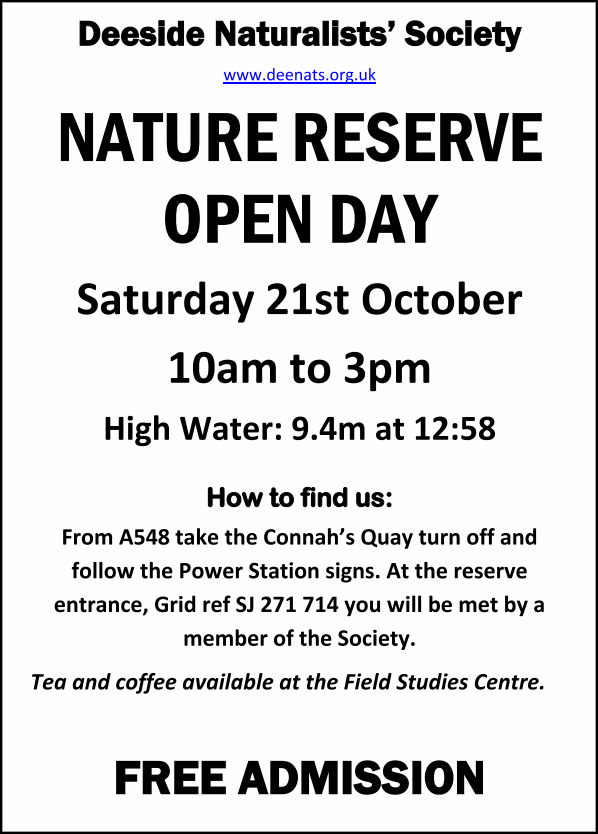Site menu:
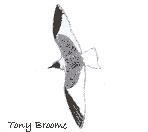
October 2017 Newsletter
Four Windy Days in September.
Colour Ring Report.
September Bird News.
Forthcoming Events.
Latest Newsletter.
Four Windy Days in September
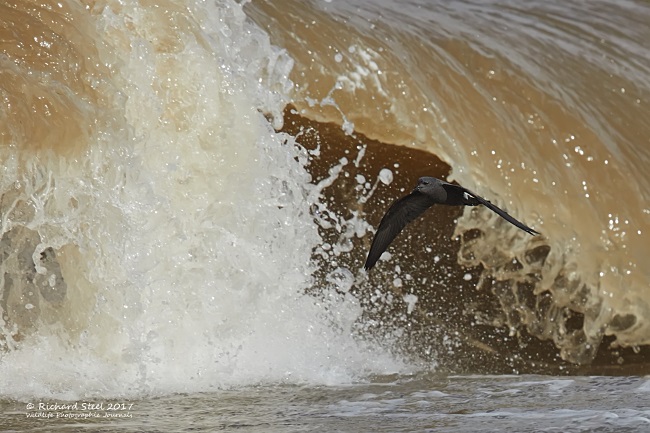
Storm Aileen came and blew in the birds, giving us the best September sea-watching since 2013, although for some species it was undoubtedly better than 2013. Below I go into details for two iconic September species and put this year's records into a historical perspective.
Grey Phalarope
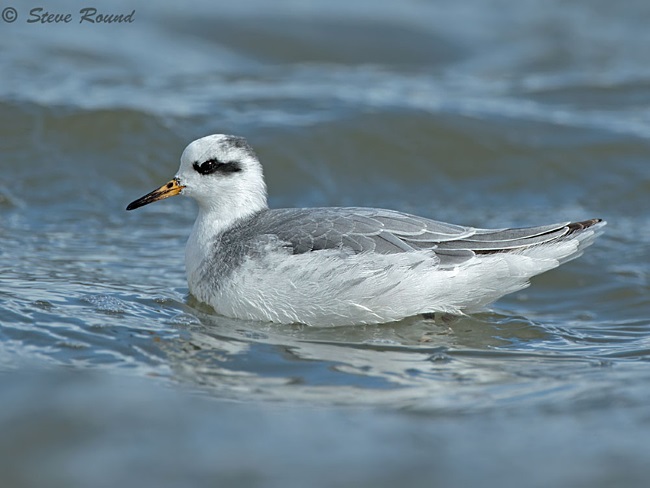
Research
suggests that September 2017 was the best month for this species on the
Dee Estuary and North Wirral since the 19th century! It was certainly
the best month this century with the graph below showing all annual
totals
for the
past 18 years (obviously, for 2017 only up to the end of September).
Note
that these totals may be higher than recorded in the local Bird Reports
as, unfortunately, not all records have been submitted to the relevant
Rarity Committees - but I'm confident that the vast majority were
genuine Grey Phalaropes.
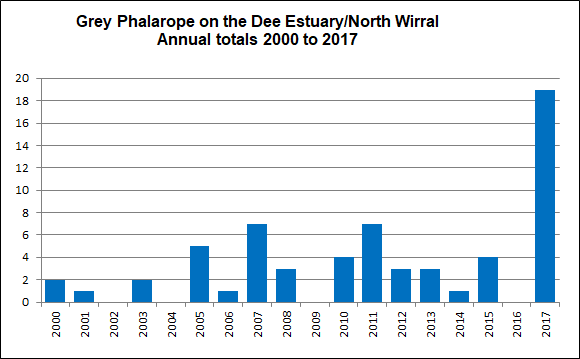
Trying to estimate the total numbers of birds seen this September has been difficult with so many reports coming in, to avoid over-estimating I've assumed that a single reported at West Kirby over two days was the same one, and that numerous reports from New Brighton in any one day were mostly of the same birds hanging around whilst one reported towards the end of the month there on two days I've also assumed to be the same bird. So, if anything, my estimate of 19 could be on the low side.
The breakdown of the September 2017
total is as
follows:
New Brighton 13
Meols
1
Hoylake
4
West Kirby 1
They
are less than annual in our area and in four of the past 18 years none
were seen whilst in a further three years only one was recorded. Nearly
all records are of single birds so the multiple records this year was
certainly most unusual - these included three together both off Hoylake
and New Brighton. Most of them
are seen during gales in September and October and linger, if at all,
for a short time but there have been a few exceptions over the past few
years:
In October 2005 good views were had of
one on New Brighton Marine Lake which stayed for three days. One was
off Hilbre on the late date of December 1st 2012. One was a
photographers dream as it
stayed on the lagoon at Gronant from October 25th to November 1st in
2013. One was on the River Mersey on the unusual date of January 5th
2015.

The records in December and January are
interesting
as it demonstrates that some must winter in the Irish Sea. Most are
thought to spend the winter months in the Atlantic west of Africa, here
they are pelagic birds - behaving much more like gulls than waders.
But I say 'thought to' as so little is known about this species in
terms of both population numbers and where they migrate to - simply
because they breed in the high Arctic, migrate over the sea and winter
out on the ocean. The birds which are blown here in autumn are assumed
to be part of the population which mostly breed in north Canada,
estimates of numbers are around one to two million - but that's more of
an informed guess rather than an estimate. Although there is evidence
the majority winter off Africa I expect we are in for some surprises
once they put tracking devices on them No doubt you will have read
about a Red-necked Phalarope which bred in Fetlar and was tracked
flying west to Greenland then down to the Caribbean, across to the
Pacific
where it spent the winter off Peru. A completely unknown and
unexpected migration route!
Leach's Storm Petrel

North Wirral, Hilbre and Point of Ayr
are the best and most reliable
sites in the whole of Europe to see Leach's Petrel, given the right
weather conditions. Storm Aileen brought those, blowing the birds
through the North Channel and down to the mouth of the River Mersey
giving us the best views of these fabulous birds since 2013.
Counts at the main sites were as follows:
| Date | Sep11th Mon |
Sep 12th Tues |
Sep 13th Weds |
Sep 14th Thurs |
|
|---|---|---|---|---|---|
| Hilbre | 35 | 49 | 17 | 90 | |
| New Brighton | 15 | 4 | 88 | 17 | |
| Leasowe/Meols | 36 | 8 | 51 | 8 | |
| Hoylake | 60 | 26 | 51 | 65 | |
| Point of Ayr | 5 | - | 35 | - |
After three very poor years it was good to see the return of Leach's Petrels, but as you can see from the graph below we have had many better years and I'm sure many of you remember 2010 - one of the best ever. What did make 2017 special was that good numbers were present for four whole days and great views were had, particularly at New Brighton where some were flying over the beach within a few feet of watching birders!

Richard Smith
References/Further Reading
1. Allan Conlin & Eddie Williams, Rare and Scarce Birds of Cheshire & Wirral, 2017.
2. Simon Delany et. al, An Atlas of Wader Populations in Africa and Western Eurasia, Wetlands International, 2009.
3. Cheshire and Wirral Bird Reports, CAWOS.
4. Clwyd/North-east Wales Reports, Clwyd Bird Recording Group.
5. Waterbird Population estimates 5th Edition, 2012, Wetlands International.
6. Richard Smith, Leach's Petrels 2010, http://www.deeestuary.co.uk/news1010.htm.
7. Birdguides.com.
Top of PageColour Ring Report
The past few weeks have been very good for spotting colour-ringed
birds,
the total includes 17 Black-tailed Godwits, two Dunlin, two Redshank,
five Oystercatchers, a Lesser-black-backed Gull, a Herring Gull and a
Black-headed Gull. Knot numbers, as usual, were low at this time of
year and we never get any ringed ones until the winter - so we
got quite a shock when loads suddenly turned up at
the Caldy
Wildfowl Collection sporting Orange flags!
Orange Flagged Knots

It turned out that, as part of the
project described below, a total of no less than 519 Knot had been
colour-ringed
on Altcar beach (just north of the Alt Estuary) on September 22nd. I
was the first person to see one of them away from the ringing
site the next day at Caldy, and over
the following seven days saw a remarkable total of 19. These were in
small flocks of
Knot of between 50 and 150, such a high % of colour-ringed
birds
is unprecedented here on the Dee!
These
birds all have a combination of two letters/numbers on the
orange
flag (left tarsus) above a pale blue ring with a BTO metal ring on the
right tarsus. You will need to get fairly close to be able to read the
flags but if you are sure of what you see send the details either to
Jim Wilson (jimwils@frisurf.no)
or to myself at
 ,
if you contact Jim I would appreciate being copied in on any feedback
so I can include it in our Dee Estuary Colour-ringed Birds Database.
,
if you contact Jim I would appreciate being copied in on any feedback
so I can include it in our Dee Estuary Colour-ringed Birds Database.
I let Jim Wilson explain what this Ribble Knot Project is all about:
From the Wetland Bird Survey Counts the knots in west coast UK in autumn and spring have been in more or less constant decline since the 1970s. From sightings made by Peter Knight and Rose Maciewicz we found out that Dutch and Norwegian marked birds were mostly missing in the autumn and spring, but are present in the winter (the well known westward movement of knots during the winter) This autumn (2017) they mainly only saw birds we marked in SW Iceland this spring and a few which we marked in NW Iceland in spring 2014 (1086 flagged). The present theory is that the west coast populations in autumn and spring can be a sub-population of the Icelandic knots. Possibly, as the sites lie about 300 kms nearer Iceland than the Wadden Sea and have a warmer spring climate, then birds migrating North out of the west coast can leave earlier, have more time to fatten in Iceland and penetrate further west into the breeding grounds. Most previous publications have focussed on the wintering population and not on the autumn and spring populations.
Also there are about 5,000 2y birds summering on the Ribble. The Ribble is one of the most important sites in the Flyway for 2y birds (ie the future breeding stock). These have never been studied.
This Research will add focus on the importance of the Ribble in autumn and spring and also on the huge and uncontrolled disturbance on the Ribble-Crosby coast (and elsewhere in the NW UK). Also it will show to what extent the autumn and spring Ribble populations are using all the NW coast estuaries and other parts of the Irish Sea and if there is a link between the wintering French populations (about 40,000 knots) and the Irish Sea.
Also this from an email from Richard du Feu who helped organise and ring such a large number of birds (in total 1,610 waders were cannon netted and most ringed, a massive undertaking):
What is clear from the data is we caught a significant proportion of 2nd year Knots that probably spent the summer in the Liverpool bay area. Although we have very little idea what birds on the West coast in early autumn do for the winter we have even less idea what the 2nd year birds that summer on the West coast do in winter. As such all sightings even if just a few days after ringing are going to be really helpful in building up a good idea of what these birds are up to.
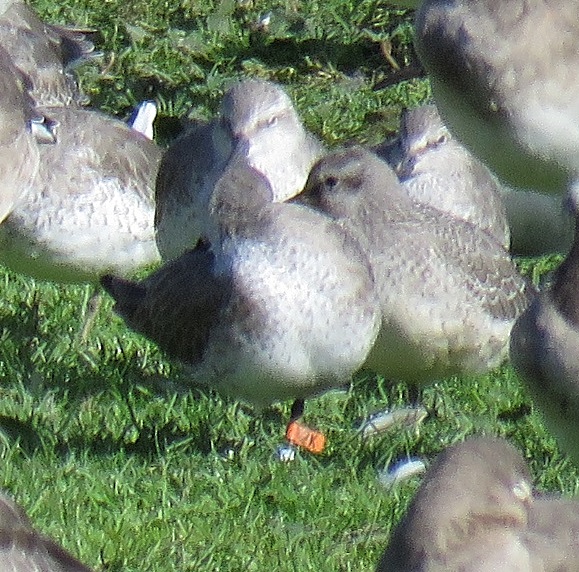
Richard
Smith.
Colour-rings were reported by Matt Thomas, Steve
Hinde, Peter Haslem, Richard Beckett, Les Hall, Jane Turner and Elliot
Montieth - details next month.
September Bird News

http://hilbrebirdobs.blogspot.co.uk/
A real classic September with so much going on that I can do no more
then give brief highlights.
To carry on the theme of "Four Windy Days in September" we had the
highest numbers of Sabine's Gull since 2011 passing through, with a
total of at least 12. Cracking views were had of an adult Pomarine Skua
and a juvenile Long-tailed Skua, both from Hilbre (more of both species
were also seen), as well as the more usual Arctic and Great Skuas.
Black Terns are not usually associated with westerly gales but were
seen throughout this period including 12 from Hilbre and nine from
Hoylake, both on the 14th.
Then there was the Wilson's Storm Petrel seen from Hilbre on the 11th.
This is officially only a 'possible' but it does seem very likely to be
a genuine 'Wilson's' given the description although being a single
person observation without a photo probably won't be accepted - but if
it is it would be a first for Cheshire and Wirral. Right at the end of
the month a Pallid Harrier was observed and photographed by several
experienced birders at Neston Marsh, and again this will be first for
Cheshire and Wirral if accepted, which seem likely. Another mega rarity
was a Greater Yellowlegs at Hilbre on the 10th.
There was a good Curlew Sandpiper passage with several seen at both Hoylake and Burton Mere Wetlands, although not as many as last year. On the other hand the Little Stint passage was exceptional peaking with 10 at Burton Mere Wetlands on the 29th, this is the highest since at least before 2010 when there was a max count of eight. Five were on Oakenholt Marsh and three on Hoylake Shore earlier in the month.
A Greenish Warbler was at Red
Rocks on the last day of the month (confirmed from sound recording)
whilst there were five reports of
Yellow-browed Warblers in the last week of September.
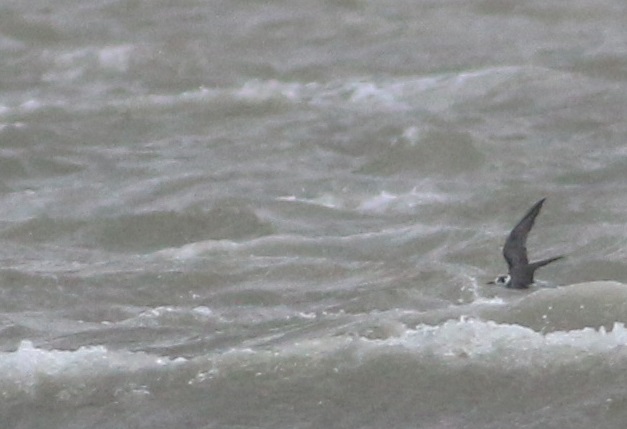
https://elliotsbirdingdiaries.wordpress.com/
Top of Page
What to expect in October
October is the best month for seeing Visible Migration when we can get hundreds of finches, winter thrushes etc passing overhead. For more details see http://www.deeestuary.co.uk/news1010.htm.
It's also a month to look out for rarities and last year we had an unprecedented influx of Yellow-browed Warblers (see article) and we can certainly expect more this year. Last year we also had record numbers of Cattle Egrets, Great White Egrets and Spoonbills.
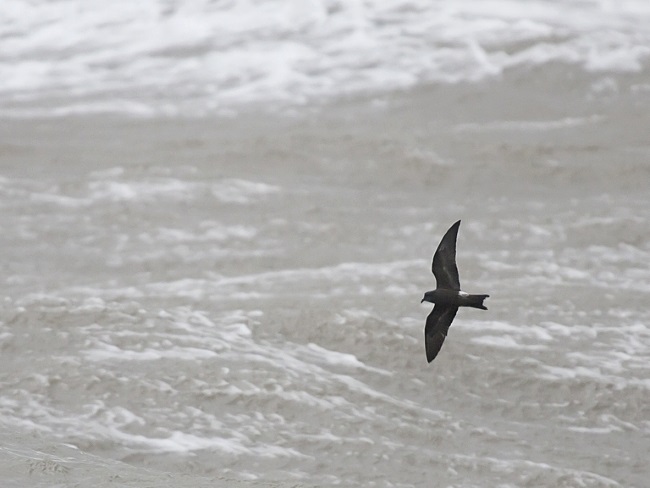
http://www.fromthemuddybanksofthedee.com/
Top of Page
Forthcoming Events
October Highest Spring Tides (Liverpool)
Also
see Tides
page.
6th October, 12.13hrs (BST), 9.6m.
7th October, 12.50hrs (BST), 9.7m.
8th SOctober, 13.29hrs (BST), 9.7m.
Forthcoming Events
Organised by the Wirral
Ranger Service , Flintshire
Countryside Service and the
RSPB (Dee Estuary):
All these events and walks have bird interest, even those not
advertised specifically for birdwatching. No need to book for these
events unless specified - please check below.
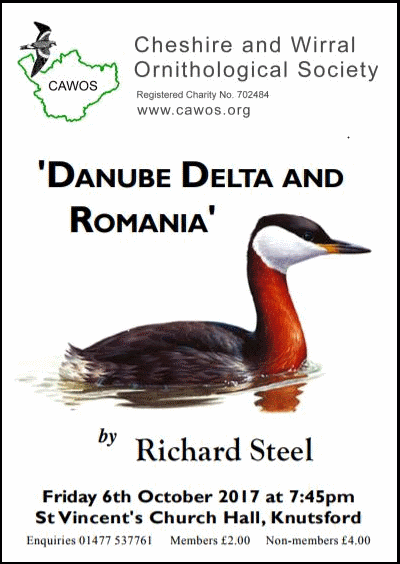
Sunday 8th October, High
Tide Raptor Watch at Parkgate
Old Baths.
11am-4pm
Price: Free
Come along to the Old Baths car park for chance of seeing a range of
birds of prey hunting over Parkgate Marsh. Harriers, peregrines and
merlins are all returning to the estuary for the winter and this is one
of the best places to watch, plus short-eared owls if we're really
lucky. This biggest tide of the month is 9.7metres around 1.30pm which
if there is low pressure and a westerly wind could push things in
close. Also chance of seeing a range of ducks, geese, wading birds and
egrets as their flocks build on the estuary for the winter.
There is free public parking at the Old Baths car park (CH64 6RN) at
the north end of The Parade, and the Wirral Country Park car park on
Station Road (CH64 6QJ). There are public toilets at Mostyn Square in
the middle of The Parade, and a number of pubs and cafes.
Directions:
Old Baths car park, Boathouse Lane/The Parade (B5135), Parkgate,
Neston, Cheshire.
For further details ring: 0151 353 8478.
Saturday 21st October, Autumn
Arrivals at Point of Ayr.
11am-2pm
Price: Free, but donations gratefully received on the day
Booking essential
- email deeestuary@rspb.org.uk
or Telephone: 0151 353
8478.
Thousands of godwits,
redshanks, oystercatchers and curlews gather in
spectacular fashion on the saltmarsh and shingle here at high tide,
which is what we hope to show you if you join us on this gentle walk
from Talacre to our hide. There'll also be a variety of ducks -
pintail, shelduck, teal and mallard - pushed close on the incoming
tide, and there's always the chance that something unexpected will show
its face! Peregrine and merlin are the two raptors most likely to take
advantage of this high tide buffet, so there's a chance of seeing these
hunting at close range.
Park in one of the public
car parks signposted from Station Road and
meet outside 'The Point' bar at the end of Station Road. Car
parks are
Pay & Display so don't forget some coins. Appropriate clothing
and footwear are essential. The path is fully accessible, but an
A-frame motorcycle gate at the beginning of the walk may make it
difficult for larger wheelchairs. High tide is at 12:48pm so feel free
to pack some snacks or lunch for in the hide, and a hot flask is
recommended at this time of year! Public toilets and places to purchase
refreshments will be available in Talacre before and afterwards.
